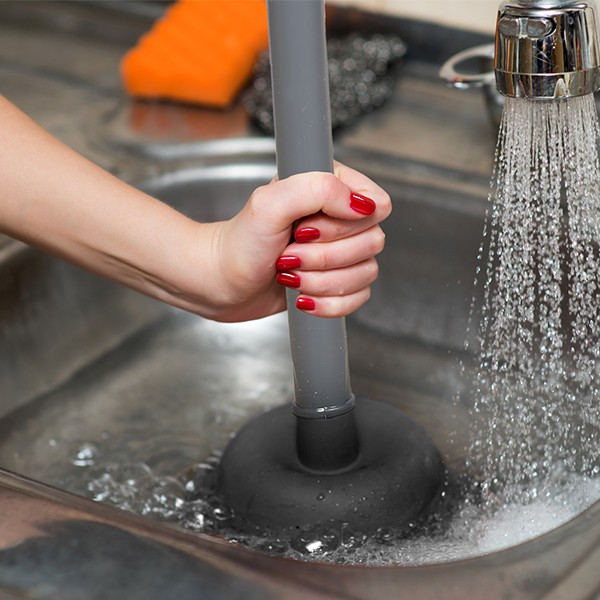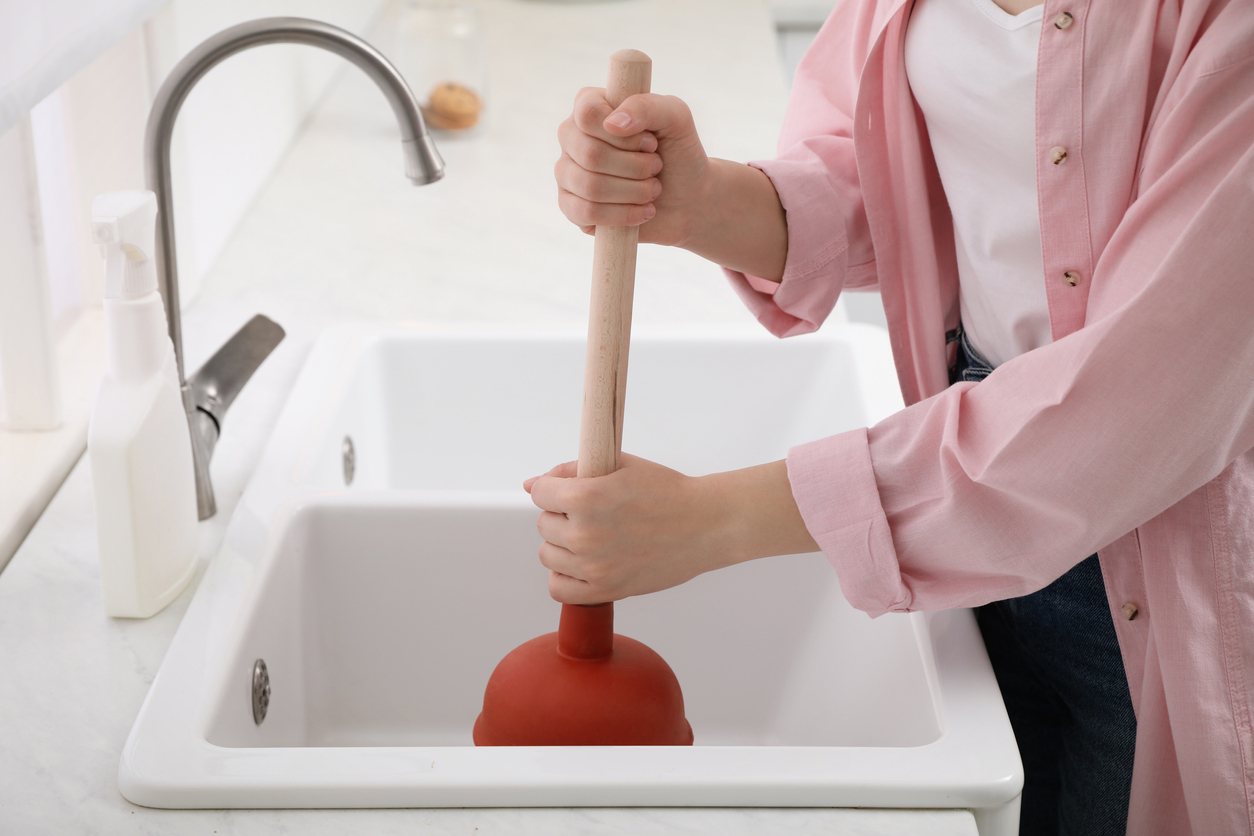Master Plungers and Drain Cleaner Methods: Expert Advice
Master Plungers and Drain Cleaner Methods: Expert Advice
Blog Article
Everyone is bound to have their unique way of thinking involving A Guide to Plungers (and How to Use Them).

Introduction
Appropriate upkeep of household drains is vital for avoiding blockages and making sure smooth water circulation. One of the trick devices in every home owner's toolkit is the bettor, together with various drainpipe cleaners designed to take on stubborn blockages effectively. This post checks out how to use plungers and drain cleansers properly to maintain your drains flowing freely.
Section 1: Comprehending Plungers
Sorts of Plungers
There are a number of kinds of bettors available, each developed for various sorts of drains and clogs. The most usual types include cup bettors, flange plungers, and accordion plungers.
How Plungers Job
Bettors work on the concept of developing stress and suction to remove clogs. When appropriately used over a drainpipe, they create a vacuum that can pull out debris or separate obstructions.
Picking the Right Bettor
Selecting the right plunger depends on the sort of drainpipe and the nature of the clog. Mug plungers are ideal for sinks and bathtubs, while flange plungers are much better matched for commodes as a result of their style.
Typical Errors with Plungers
Avoiding these blunders ensures effective plunging: inappropriate seal around the drain, not enough pressure, and unclear surrounding debris.
Area 2: Making Use Of Plungers Successfully
Prep work
Prior to diving, ensure the bettor covers the drain entirely and forms a limited seal. Clear any noticeable particles around the drainpipe opening.
Strategy
Beginning with mild plunging activities to build suction. Increase pressure gradually, using a stable rhythm. Repeat as required up until the drain clears.
Fixing Tips
If plunging doesn't work, attempt readjusting the seal, using oil jelly for a much better seal, or utilizing a different sort of bettor.
Section 3: Understanding Drainpipe Cleansers
Types of Drainpipe Cleansers
Drain cleansers can be chemical or enzymatic. Chemical cleansers utilize solid chemicals to dissolve clogs, while chemical cleaners utilize natural enzymes to break down raw material.
How Drain Cleaning Company Work
Chemical cleansers react with obstructions to dissolve them, while enzymatic cleansers break down organic materials like hair and oil without harming pipes.
Safety and security Considerations
Always put on gloves and eye security when making use of chemical drainpipe cleaners. Ensure appropriate air flow and adhere to manufacturer directions meticulously.
Eco-Friendly Alternatives
Consider using vinegar and baking soda or enzyme-based cleaners for environment-friendly alternatives that are more secure for pipelines and the atmosphere.
Section 4: Using Drainpipe Cleaning Company Efficiently
Application Methods
Pour chemical cleansers straight into the drain opening. Allow them to help the recommended time before flushing with hot water. Chemical cleansers need to rest over night.
Preventative measures
Avoid mixing various kinds of cleaners, as this can generate hazardous fumes. Never make use of chemical cleaners in conjunction with a bettor, as splashing can happen.
Dealing With Persistent Clogs
For consistent clogs, think about making use of a plumbing serpent or calling a specialist plumbing technician to stop damage to pipes.
Final thought
Finally, understanding exactly how to make use of bettors and drainpipe cleaners efficiently is crucial for maintaining healthy plumbing systems. By choosing the right tools and methods, house owners can deal with small blockages and stop major pipes issues down the line.
4 DIY Ways to Unclog Drains
Wire Hanger
This age-old technique has been used by many an amateur plumber – to much success. Take any wire hanger, deconstruct its shape and leave a small hook shape on the end. Time to go fishing! Remove the shower or sink drain cover and snake the wire into the drain, wiggling and rotating it as you push it through. Dispose of the gunk that you remove and flush the drain with hot water. Rinse with a pan of boiling water for best results.
Plunger
Creating a suction in your drain can break up clogs caused by hair and soap residue build up. First, make sure you are using the correct type of plunger, one specifically for sinks or tubs. They are typically smaller than regular toilet plungers and often have a shallow suction cup. Regular plungers can work too but we’d recommend cleaning them first and finding a way to create better suction over the drain.
Baking Soda and Vinegar
This technique is a classic – and one of the most popular DIY drain unclog methods. Pour one cup of baking soda and one cup of vinegar down the drain and allow it to work its magic overnight. The next morning, flush the drain with boiling water. Repeat if necessary.
Drain Snake/Hair Clog Tool
If you know your clog is caused primary by hair, a drain snake/hair clog tool might be your best option. These tools can be purchased for under $10 at any hardware store and work well so long as the clog isn’t too deep in the drain.
https://www.callcatons.com/blog/four-diy-ways-to-unclog-drains/

Application Methods
Pour chemical cleansers straight into the drain opening. Allow them to help the recommended time before flushing with hot water. Chemical cleansers need to rest over night.
Preventative measures
Avoid mixing various kinds of cleaners, as this can generate hazardous fumes. Never make use of chemical cleaners in conjunction with a bettor, as splashing can happen.
Dealing With Persistent Clogs
For consistent clogs, think about making use of a plumbing serpent or calling a specialist plumbing technician to stop damage to pipes.
Final thought
Finally, understanding exactly how to make use of bettors and drainpipe cleaners efficiently is crucial for maintaining healthy plumbing systems. By choosing the right tools and methods, house owners can deal with small blockages and stop major pipes issues down the line.
4 DIY Ways to Unclog Drains
Wire Hanger
This age-old technique has been used by many an amateur plumber – to much success. Take any wire hanger, deconstruct its shape and leave a small hook shape on the end. Time to go fishing! Remove the shower or sink drain cover and snake the wire into the drain, wiggling and rotating it as you push it through. Dispose of the gunk that you remove and flush the drain with hot water. Rinse with a pan of boiling water for best results.
Plunger
Creating a suction in your drain can break up clogs caused by hair and soap residue build up. First, make sure you are using the correct type of plunger, one specifically for sinks or tubs. They are typically smaller than regular toilet plungers and often have a shallow suction cup. Regular plungers can work too but we’d recommend cleaning them first and finding a way to create better suction over the drain.
Baking Soda and Vinegar
This technique is a classic – and one of the most popular DIY drain unclog methods. Pour one cup of baking soda and one cup of vinegar down the drain and allow it to work its magic overnight. The next morning, flush the drain with boiling water. Repeat if necessary.
Drain Snake/Hair Clog Tool
If you know your clog is caused primary by hair, a drain snake/hair clog tool might be your best option. These tools can be purchased for under $10 at any hardware store and work well so long as the clog isn’t too deep in the drain.
https://www.callcatons.com/blog/four-diy-ways-to-unclog-drains/

Hopefully you enjoyed reading our article on How To Use Your Toilet Plunger Correctly in 5 Easy Steps. Thanks for finding the time to read through our article post. Do you know somebody else who is occupied with the topic? Do not hesitate to share it. Thanks for taking the time to read it.
Click Here Report this page